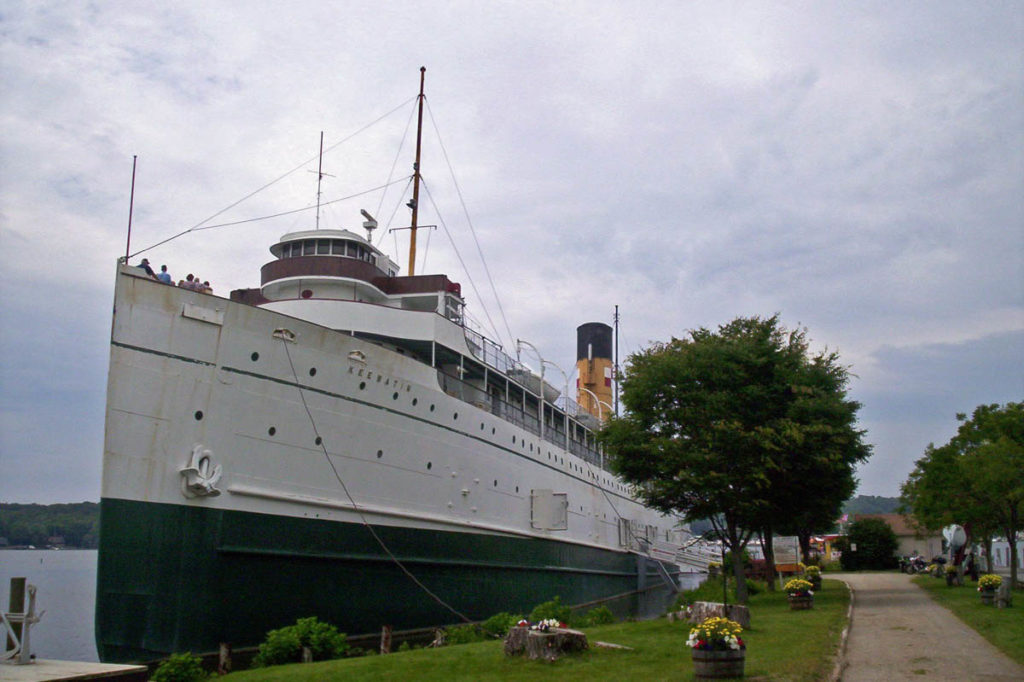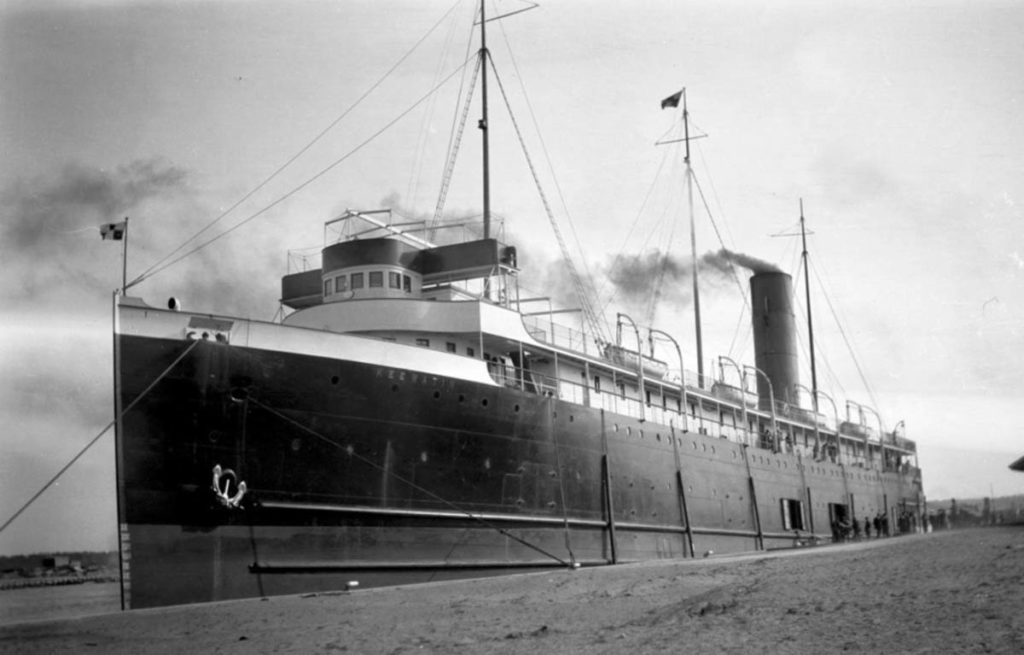The S.S. Keewatin, a Titanic-era steamliner built in 1907, has been acquired by the Marine Museum in Kingston, Ontario. The SS Keewatin will be relocated from Port McNicoll to Kingston’s Marine Museum of the Great Lakes later this year and will be open for tourists in the spring of 2024. Before arriving at its new home in Kingston, the historic ship will be transported to a shipyard for much-needed repairs.
The SS Keewatin was a passenger liner that operated in Ontario, Canada, between Port Arthur/Fort William (now Thunder Bay) on Lake Superior and Port McNicoll on Georgian Bay (Lake Huron). She transported passengers for the Canadian Pacific Railway’s Great Lakes steamship service between these ports. At these ports, Keewatin also transported packaged freight goods for the railway.
Keewatin is one of the world’s largest Edwardian-era passenger steamers, along with Nomadic and the lake steamer TSS Earnslaw (1913), which is still in operation in New Zealand.

Keewatin was a passenger liner that measured 3,856 GRT and 2,470 NRT when it was built. The ship measures 102.6 metres (336 ft 7 in) between perpendiculars, has a beam of 13.3 metres (43 ft 8 in), and a draught of 7.2 metres (23 ft 7 in). Four coal-fired scotch boilers, each 4.3 metres (14 ft 1 in) by 3.4 metres (11 ft), provided steam to a quadruple expansion steam engine turning one screw, producing 3,000 horsepower (2,200 kW) nominal. The ship could reach a top speed of 16 knots (30 km/h; 18 mph) and could cruise at 14 knots (26 km/h; 16 mph). The ship had 108 staterooms with 288 passenger berths. The ship was manned by 86 officers and crew members.
Keewatin was launched on July 6, 1907, by Fairfield Shipbuilding and Engineering Company in Govan, Glasgow, Scotland. The ship set sail on her maiden voyage, docking in Lévis, Quebec, to be cut in half because the canals below Lake Erie, specifically the Welland Canal, could not handle ships as long as Keewatin. The ship was reassembled in Buffalo, New York, and resumed her voyage under her own power to Owen Sound, Ontario, to begin service.
Keewatin was originally intended to connect the Canadian Pacific Railway’s continental route. She and Assiniaboia were joined by Manitoba, Athabaska, and Alberta. She accomplished this by connecting the railroad’s Owen Sound depot to Fort William Port Arthur on Lake Superior. Port McNicoll, Ontario, was established as the new “super port” and rail terminus in 1912, and the ships relocated there. The ships took two and a half days each way, including a half-day transit through the Soo Locks. Port McNicoll was known as the “Chicago of the North” until the trains and ships were discontinued in 1965 following the completion of the Trans Canada Highway through northern Ontario, effectively killing the town, as all of the rail and ship jobs left.
The vessel was sold to Skyline International Developments Inc. in August 2011, and was returned to its home port of Port McNicoll, Ontario, on June 23, 2012, for restoration and permanent display as a maritime museum and event facility. This was made possible by the cooperation of local and state officials in obtaining permissions and permits to dredge the harbour where Keewatin had sat for 45 years in order to move the ship. The Diane and RJ Peterson Keewatin Foundation, a non-profit organization, was established to operate and restore the ship. The project was funded by Skyline Developments, a publicly traded corporation that was rebuilding the 12,000-acre Port McNicoll site.

Keewatin, along with the South American and Milwaukee Clippers, was one of the last of the Great Lakes’ turn-of-the-century style overnight passenger ships. Keewatin ran almost continuously until it was retired on November 29, 1965. She was soon purchased for historic preservation in the United States. Her sister ship, the Assiniboia, was also planned to be preserved as a tourist attraction, but it burned down in 1971 and was scrapped.
After languishing for a few years, West Michigan entrepreneur Roland J. Peterson Sr. purchased Keewatin in January 1967 for $37,000, $2,000 more than it would have sold for scrap. On June 27, 1967, it arrived on the Kalamazoo River in Douglas, Michigan. From 1968 to 2012, the ship was known as the Keewatin Maritime Museum and was permanently docked across the river from the summer retreat at Saugatuck, Michigan.
Skyline Marine purchased Keewatin in July 2011 and had it dredged from the Kalamazoo River with a one-mile (1.6 km) long, ten-foot (3.0 m) deep, 50-foot (15 m) wide excavation and dredged channel and moved to the mouth of the river and Lake Michigan on June 4, 2011. Keewatin, manned by a ten-man crew, was towed back to Canada and arrived in Port McNicoll on June 23, 2012.
The Keewatin was donated to the Marine Museum of the Great Lakes in Kingston, Ontario, this winter (2023). Skyline Investments donated the ship to the museum, and the museum has the necessary expertise, facilities, and funding to properly restore, maintain, and preserve this unique piece of Canadian history.
The ship has also served as a floating set for a number of maritime-related documentaries and television docudramas, including those about the torpedoed ocean liner Lusitania, the burned-out Bahamas cruise ship Yarmouth Castle, the Canadian Pacific’s Empress of Ireland, and Titanic. She was also used extensively in the opening episode of Season Seven, “Murdoch Ahoy,” of Murdoch Mysteries. “Bring Her on Home,” a documentary, was also made and aired on CBC Canada.






